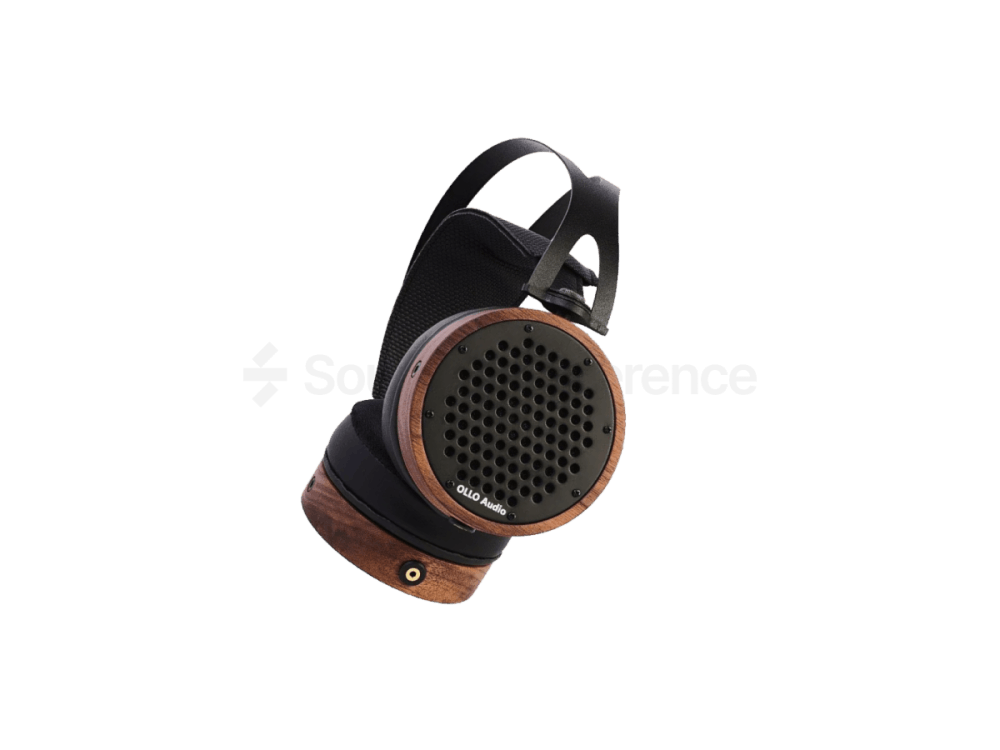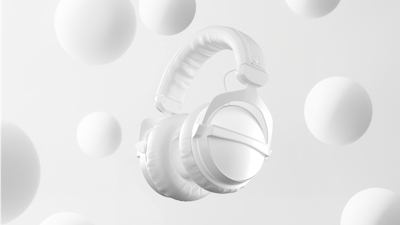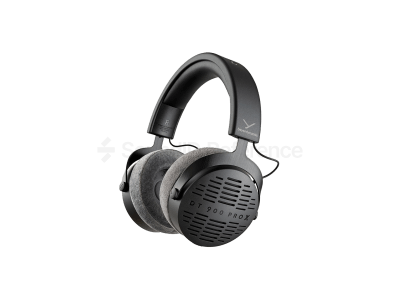Can’t blame you if this is the first time you’ve heard about Ollo, they’re a relatively new company from Slovenia. What caught our eye (and of many others) is that Ollo claims that their S4 and S4r headphones don’t need no digital calibration (the nerve!)! Having measured over 2000 headphones, we can say with confidence that there aren’t any headphones that offer a neutral sound throughout the audible frequency range. Sennheiser HD 650 comes very close, but they lack low-end extension and their highs do better with some adjustments. Let’s find out whether a newcomer can do what Sennheiser couldn’t! After all, Oppo did come out of the blue with their stellar PM-3 and outdid just about every closed headphone on the market.
- Superbly serviceable
- Decently comfy
Pros list with SoundID Reference calibration
- Bass boost is reduced
- Highs are toned down
- Sub-bass extension increases
- U-curve colors the sound
- Sides are unlabeled
- Cable feels a bit cheap
- The headband construction audibly rings
The 32 Ohm Ollo S4 is an easy load even for mobile devices, so volume won’t be a problem. The same goes for just about every modern audio interface out there, if the headphone output isn’t noisy, then you should be more than fine. One thing to be aware of is output impedance, the general rule thumb is to never go over 1/8th of load impedance, so anything below 4 Ohms should be fine. Otherwise, you’ll get extra mid-bass which is the last thing this headphone needs.
This one was really tricky for me. On one hand, the actual manufacturing quality is very good, yet on the other – there are some questionable design decisions. Let’s start with the good. Or rather with the wood, which I adore. I used to own an Audeze LCD-2 in rosewood and the S4’s walnut earcups are similarly superb. Maybe a bit rougher around the edges, but kudos to Ollo for choosing wood. Let’s see how it holds up to long-time use as some wooden headphones have cracked due to the tendency of the material to change over time. I don’t see any weak points in the S4’s earcups where cracking could occur. The headband uses a hammock-style suspension, yet the headphone relies on the clamp to hold the earcups securely to one’s temples. Just about every joint is well done and doesn’t exhibit any play. This is commendable for a small business operation.
Now for the bad. The channels aren’t marked in any way, so either you mark them or struggle from time to time. A tiny mark for the right channels would’ve done wonders. The cable also feels a bit cheap. The Y-splitter seems to be filled with glue to hold in both of the wires going to individual earcups. I know that injection molded Y-splitters are hard to get for smaller companies, but maybe it’s worth looking at some aftermarket cable makers. Maybe they can give some tips or offer something.
Now the ugly. The spring steel wire used in the headband rings like crazy. Once you put the S4 on your head and let go of the headband, it will sometimes ring up to 10 seconds, unless you “mute the strings” by hand. Previously I had encountered the same problem with Meze 99 Classic headphones. Only there the ringing would die down faster, probably due to a more rigid headband.
Would you look at that smile! This response is really nice for recreational listening because the elevated bass will make lower SPL listening seem more dynamic. As for professional work… I don’t think so. That mid-bass hump is a good 8 dB louder than the mids and will likely cause auditory masking which will bleed into the mids. There are two things going on in upper mids and highs. The general emphasis adds some brightness and will make overtones appear more prominent than they actually are. Then there’s a deep notch around 7 kHz which won’t be readily audible but can mess up precision work if the content falls in this region. Overall this is a very colored-sounding headphone. Ollo claim that the S4 should be “flat out of the box” according to a miniDSP EARS measurement rig. Our measurements respectfully disagree.
Pretty superb actually. It does seem like drivers are heavily cherrypicked and matched to each other. The peak at 10 kHz doesn’t seem to match the other channel, but that’s a very minor not to pick. Companies who have been decades in the headphone business have had done WAY worse in this regard.
Most headphones use one of two methods to stay on a person’s head – either they employ a strong clamp or hang by the headband. The Ollo S4 uses a hammock-type suspension which initially made me think they’d use the former method, however, they also clamp pretty hard. Generally, the clamping force isn’t strong enough to cause headaches, but some might find it uncomfortable. One advantage of the headband suspension is that the S4 doesn’t require any adjustments to fit all head sizes.
Currently, Ollo S4 is priced a tad below the “usual suspect” HD 650. If you want to be extra cheeky, you can actually buy each part of the headphone separately and get the price down to around € 200. This still won’t do anything about the elephant in the room – the heavy coloration present in the headphone. Pile on some of the other misses in the build quality department and things doesn’t look too good. If you definitely want them, be sure to listen, before committing to anything.
Very nice! Distortion throughout the frequency band should be inaudible. The peaking at 7 kHz coincides with the null suggesting that there might be resonant mode. Another peak at 3.4 kHz coincides with another dip in the frequency response. Overall the driver seems to have very good power handling and sub-bass distortion is impressively low.
Our engineers sometimes struggle to agree about the upper mids, but with Ollo S4 the lower mids were a controversial point. I suspect that the ringing headband might be to blame there.
How much do they differ pair to pair in terms of frequency response?If channel-to-channel consistency is great, then consistency between different samples wasn’t impressive. This suggests that driver pairs are handpicked, however, consistency from pair to pair is left to manufacturing tolerances.
Rating
Conclusion
I’m always excited to see new players entering the headphone game. Companies like Mr. Speakers started out from DIY, a giant like Audeze used to be two guys in a garage in Vegas. As it is right now the Ollo S4 isn’t recommended by us for serious audio work. It can be used for recreational listening as the general curve pretty much matches what many people like to hear. Just make sure to mute the headband ringing once you put them on and listen to some early Beatles to check if the channels are right.
Final Rating
Calibration Enabled
Calibration








